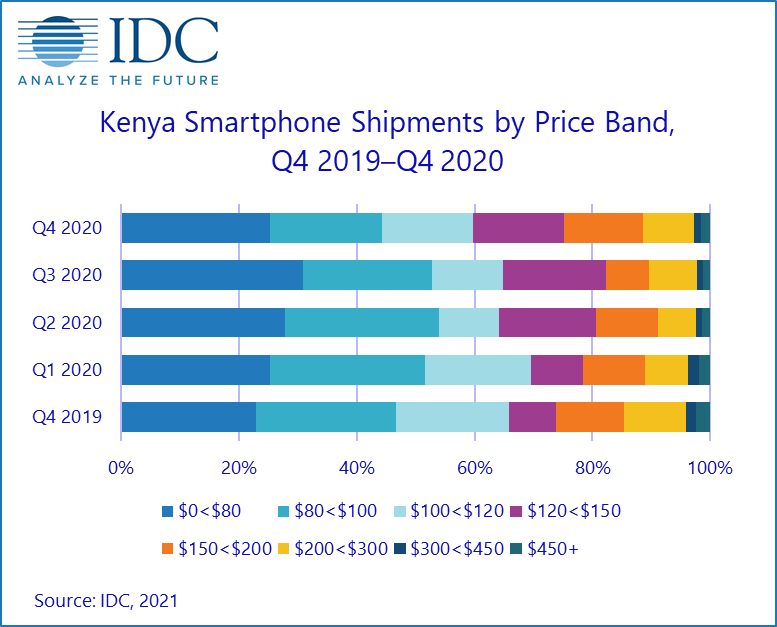It seems like the effects of the COVID-19 pandemic have been wearing off slowly in Kenya as smartphones and feature phones grew in sales in Q4 2020. This was revealed by a report from International Data Corporation (IDC) that states the mobile phone market saw a 15% quarter-on-quarter growth in the closing three months of 2020.
According to IDC, smartphone shipments increased by 11.3% while feature phone shipments went up 20.8%. This is despite the fact that the overall market saw a 2% year-on-year (YoY) decline in 2020. Feature phones shipments generally went down 8.7% YoY for the year as a whole. Smartphone shipments luckily defied the tide and increased by 3.3%.
This growth in the Kenyan market during Q4 2020 was reportedly a result of aggressive marketing by the brands operating in the country. This was done through advertising campaigns, Christmas offers and Black Friday promotions. Other drivers to this sike included the reduction of VAT to 14% as well as the PAYE exemption for low-income earners.
Smartphones took up 59% of the total mobile phones shipped into the market in Q4 2020 as major retailers got to successfully launch new models during the quarter.
In the lead was TECNO that collected a 30.7% share of total shipments in the quarter while Samsung took up 14% share and Huawei 10.2%. Surprisingly, Safaricom Neon went up all the way to fourth place with 8.4% unit share beating brands that we are used to seeing take those positions for years. It is certainly interesting to see a local brand like Safaricom Neon challenge for top positions in the Kenyan market.
Meanwhile, feature phones made up the remaining 41% of the total mobile phone shipments in the same period. the major brands that dominated this space were Nokia with a 44.5% share, Itel with a 29.3% share and TECNO with a 24.8% unit share.
The growth in the smartphone space is mostly attributed to the launch of new devices in the country especially those in the midrange and premium spectrum. The statistics do back this theory as they show a share growth in smartphones that cost $150-$300.


It is now safe to say that the market is gradually recovering as it had been predicted earlier last year when everything was breaking down. But there is no doubt that it will still take lots of effort for the various brands to get back to normal operations.
There is also an expectation for 5G smartphones to start shipping into the Kenyan market this year as major brands look to integrate the new tech in their upcoming products.
“While 5G-enabled devices will sustain a growing trend throughout the year, they will remain minor in terms of actual shipment numbers,” says George Mbuthia, a research analyst at IDC.
“5G models will be launched in the midrange and premium price bands, leading to small unit volumes in the market. Going forward, the proliferation of 5G devices in the smartphone segment, increased competition, and improved international connectivity will see the market undergo considerable changes in terms of 5G infrastructure development.”






[…] Source link […]